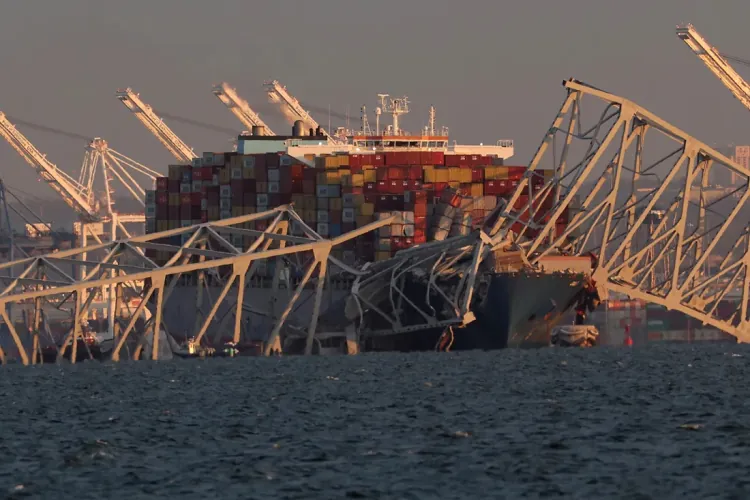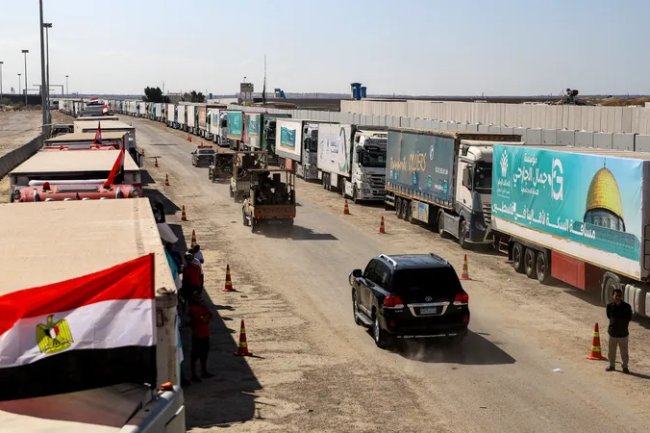Bridge Collapse in Baltimore: Analyzing the Impact of a Ship Collision
catastrophic collapse of Baltimore's bridge after a ship collision, with insights from structural engineering

Introduction
- Overview of the Baltimore bridge collapse incident on March 26, 2024
- Initial reports and emergency response
The Incident at a Glance
- Description of the event: A container ship colliding with the Francis Scott Key Bridge
- Immediate consequences: Bridge collapse and vehicles plunging
Expert Analysis: Jerome Hajjar's Perspective
- Hajjar's credentials and role
- Discussion on the design-load mismatch and larger commercial vessels
The Technical Factors Behind the Collapse
- The concept of design loads versus actual impacts
- How the collision affected the bridge's support structure
Historical and Structural Significance of the Francis Scott Key Bridge
- Bridge's status and importance in infrastructure
- The engineering marvel it represented at the time of construction
The Dali's Collision and its Aftermath
- Details about the cargo ship involved
- Statements from the ship's owners and no reported injuries on board
Bridge Design and Safety Considerations
- Hajjar's views on bridge safety and design criteria
- The challenge of navigating large commercial vessels
Surviving Bridge Collapses
- Insights into bridge failure causes and survival chances
The Broader Implications for Structural Engineering
- How the incident impacts the field of structural engineering
- The importance of investigating and learning from such collapses
FAQs
- What are the main causes of bridge failures?
- How does the size of modern ships challenge existing bridge designs?
- What steps can be taken to prevent similar incidents in the future?
Conclusion
- Reflections on the importance of updating infrastructure to match modern challenges
- Encouragement for ongoing investigation and learning within the engineering community
The catastrophic event that unfolded in the early hours of March 26, 2024, when a container ship collided with the Francis Scott Key Bridge in Baltimore, Maryland, has sparked a significant conversation about structural engineering, bridge design, and the unforeseen challenges posed by modern commercial shipping. The collapse led to vehicles plunging into the water below, prompting a swift emergency response. Thankfully, no individuals were reported in the vehicles that fell, highlighting a small mercy in an otherwise dire situation.
Jerome Hajjar, a renowned figure in structural engineering, offers a profound insight into the possible design factors at play. As the CDM Smith Professor of Civil and Environmental Engineering at Northeastern University, Hajjar suggests that the incident highlights a critical oversight in older bridge designs – the failure to anticipate the ever-increasing size of commercial shipping vessels.
Hajjar points to a "mismatch between the size of the load" resulting from the ship collision and "the expected loads at the time of the bridge design." This discrepancy suggests that the structural integrity of the bridge, designed in a different era, could not withstand the force of the modern, significantly larger, commercial vessel.
The Francis Scott Key Bridge, an engineering marvel and the second-longest continuous-truss bridge span in the world at its completion in 1977, now serves as a stark reminder of the challenges facing aging infrastructure in the face of evolving commercial needs. The cargo ship involved, a Singapore-flagged vessel named Dali, highlights the global nature of these challenges, emphasizing the need for international considerations in infrastructure planning and design.
This incident has broader implications for the field of structural engineering. It underscores the importance of re-evaluating existing structures in light of contemporary demands and technologies. The structural engineering community, as Hajjar notes, takes such incidents "really seriously," with investigations into collapses being thorough and often years in the making.
As we await further analysis and recommendations from these investigations, the Baltimore bridge collapse serves as a critical lesson in the importance of foresight in engineering and the need for constant re-evaluation of our infrastructure to safeguard against the unforeseen challenges posed by our rapidly changing world.
Explore more on the significance of bridge design and safety in modern infrastructure.
Understanding the challenges posed by large commercial vessels to bridge infrastructure.
Learn about the critical role of structural engineering in preventing infrastructure failures.
The questions raised by this incident are not merely technical but also existential, challenging us to consider how we design, maintain, and adapt our infrastructure to meet the demands of the future. The Baltimore bridge collapse, therefore, is not just a case study in structural engineering but a call to action for all those involved in the creation and stewardship of our built environment.
What's Your Reaction?






















